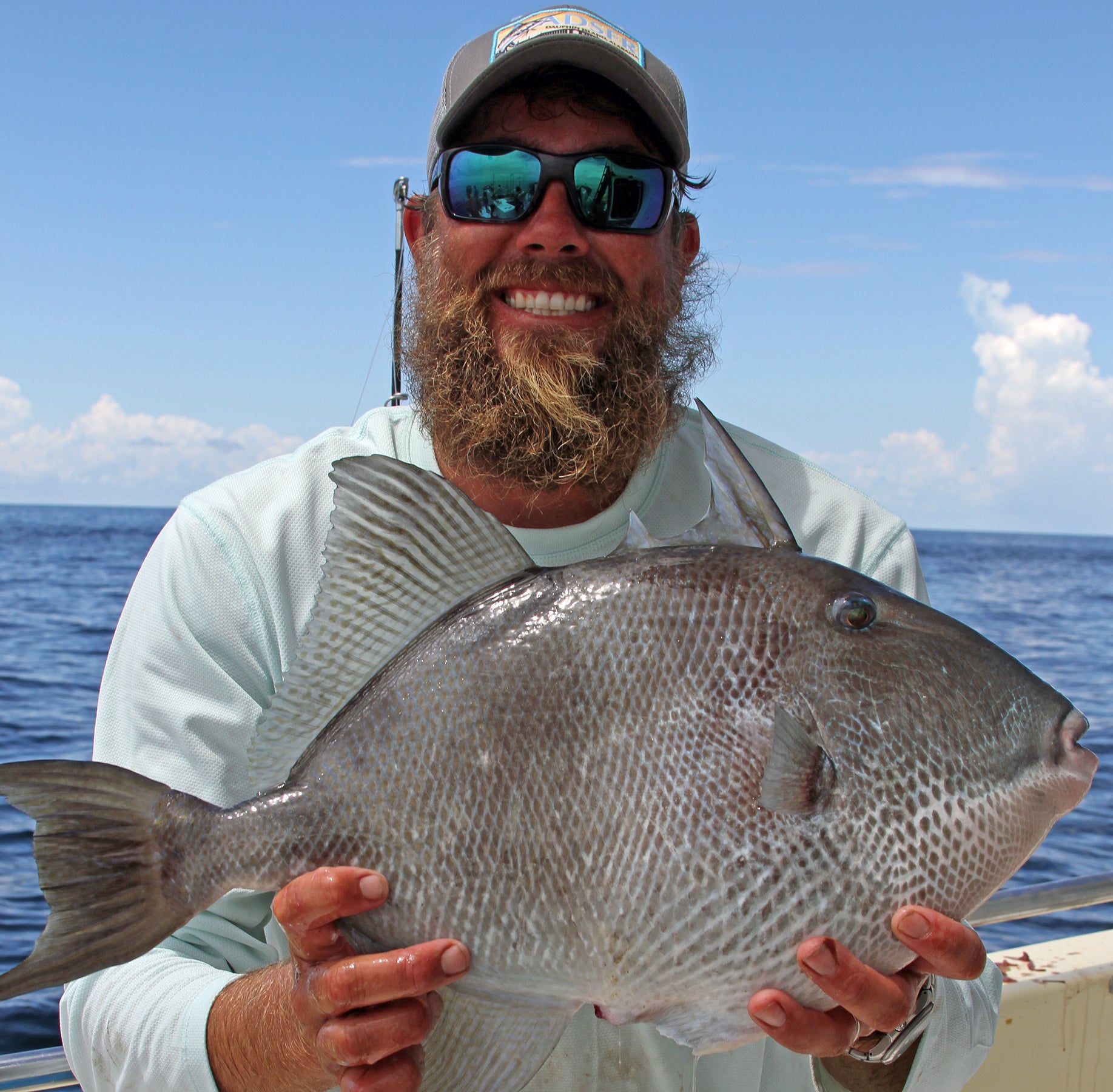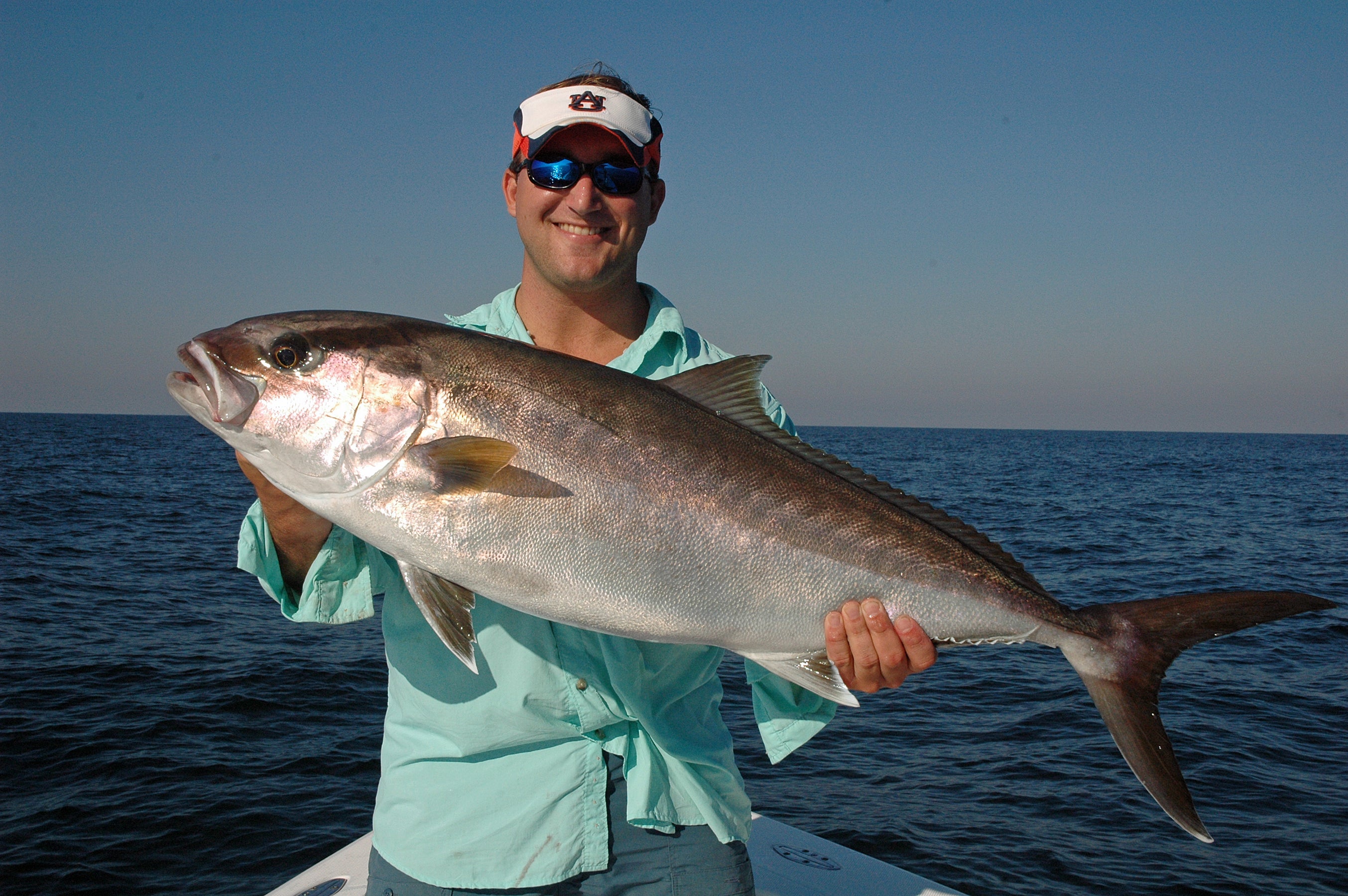By DAVID RAINER, Alabama Department of Conservation and Natural Resources
The season opener for gray triggerfish in state and federal waters is March 1, which marks the first season that reporting of triggerfish and greater amberjack becomes mandatory in the Alabama Red Snapper Reporting (Snapper Check) System.
The gray triggerfish limit is one per person with a minimum size of 15 inches fork length. The National Marine Fisheries Service (NMFS) has set a quota for the Gulf of Mexico at 305,300 pounds, and the triggerfish season is set to close on May 31 or when NMFS determines the quota has been met. Federal management of gray triggerfish is through the Gulf of Mexico Fishery Management Council (GMFMC), an advisory body to NMFS.
“Triggerfish and greater amberjack are very valuable species to the state of Alabama, similar to red snapper,” said Scott Bannon, Director of the Alabama Marine Resources Division (MRD). “We have funded a fisheries-independent study through the University of South Alabama and the Dauphin Island Sea Lab to estimate the number of key reef fish living near artificial reefs and natural habitats off of Alabama. For red snapper, we added the harvest estimates for charter and private anglers from Snapper Check to commercial landings and compared the total harvest to the estimate from the habitat study. The comparison has shown that harvests are considered sustainable.”
Although the GMFMC recommended to NMFS an increase in the gray triggerfish quota to 456,900 pounds last month, Bannon said gray triggerfish and greater amberjack have been species of concern for the Gulf Council. Mandatory reporting of these two fish through Snapper Check will provide additional data for the management of the species. The greater amberjack season is tentatively scheduled to open May 1, but NMFS has not determined how many amberjack were caught during the August-October 2020 season and whether any quota is available for a May opener.
“Receiving the landing reports will allow us to know what people are catching off the coast of Alabama,” Bannon said. “We don’t always agree with the federal landings. In our habitat study, the trend off of Alabama is that triggerfish numbers are going up. We would like to look at what the harvest numbers look like coming into the State of Alabama as opposed to the federal MRIP (Marine Recreational Information Program) surveys. Again, we sometimes have disagreements with what they’re showing, so we’d like to be able to make that comparison of our numbers to their numbers, similar to what we did with red snapper.”
On the red snapper front, the news may not be as rosy. NMFS is insisting that data from the MRIP and state reporting systems be “calibrated,” which could cause significant cuts to Alabama’s quota and reduce the number of days for private recreational anglers.
“Under the Gulf Council state management plan, there is a section that says there will be a calibration factor between the federal surveys and what they say about how many fish are landed in each state and what our surveys show are landed,” Bannon said. “Ultimately, NMFS wants to use that calibration number to develop what they call a ‘common currency’ across the Gulf for each state survey.
Under certain calibration alternatives, Alabama’s quota for red snapper could go from 1.12 million pounds in 2020 to 547,298 pounds in 2021.
“We’re in disagreement with that, and we are working through the Gulf Council process to find an alternative way to work through that and not have a dramatic cut in our season,” Bannon said. “Mississippi’s calibration is larger than Alabama’s, and they would see a season cut even larger than that. The other Gulf states, Texas, Louisiana and Florida, would stay similar to last year’s quotas.
“Alabama and Mississippi use federally certified quota monitoring programs that count fish through Snapper Check and (Mississippi’s) Tails and Scales. We developed the Snapper Check program because we felt the federal MRIP program was flawed, and now they still want to use that program as the standard, and that is just not right. We’re working to have the state data incorporated into the stock assessments versus the federal data to give us a more realistic look at what’s being harvested.”








